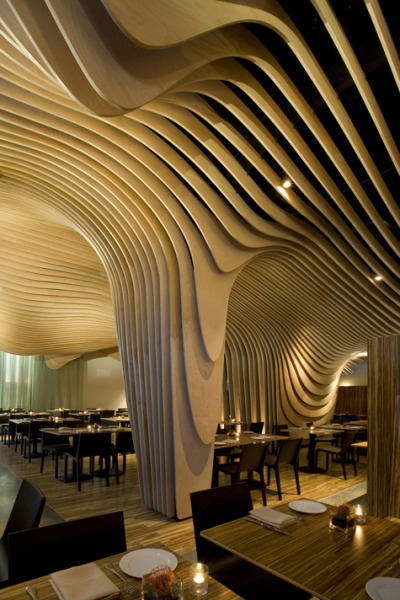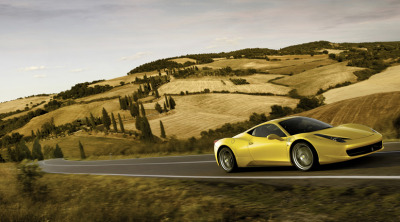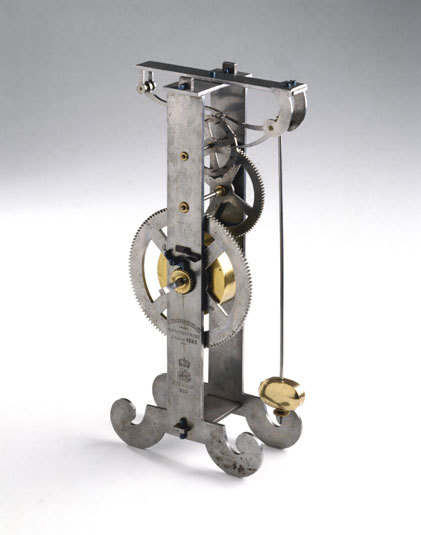from Oliver Bucher:
picture HD
Pictured above: Casa Batlló. 1905 – 1906. Antoni Gaudi. Barcelona.
The Sensuous Impulse
The sensuous impulse in design signals a turning away from the restrictive style of classicism’s rigid geometry, looking instead to the free flowing forms and motifs found in nature for inspiration. This impulse exploded in France under the reign of Louis XV, from 1730 to 1765, to what is known as the rococo period. Designs of this period reflect the extravagant lifestyles of the rich upper class who flaunted power through wealth rather than structure and order.
The rococo impulse was smothered by neoclassicism during the late 18th and early 19th centuries only to blossom internationally from around 1800 to 1915 in the period now commonly termed Art Nouveau. A magnificent example of the sensuous impulse in design during this period can be seen in the work of Catalan Spanish architect Antoni Gaudi, who was heavily influenced by nature.
Despite a constant shifting back and forth between design styles throughout the 1900’s, the sensuous impulse has lived on, manifest in designs even up to this day.
Recent advances in technology such as 3d printing have allowed us to create works of detail and intricacy which follow the sensuous impulse in ways never before possible.
For more information on Antoni Gaudi’s Casa Batllo visit: http://www.casabatllo.es/
The Sensuous Impulse
The sensuous impulse in design signals a turning away from the restrictive style of classicism’s rigid geometry, looking instead to the free flowing forms and motifs found in nature for inspiration. This impulse exploded in France under the reign of Louis XV, from 1730 to 1765, to what is known as the rococo period. Designs of this period reflect the extravagant lifestyles of the rich upper class who flaunted power through wealth rather than structure and order.
The rococo impulse was smothered by neoclassicism during the late 18th and early 19th centuries only to blossom internationally from around 1800 to 1915 in the period now commonly termed Art Nouveau. A magnificent example of the sensuous impulse in design during this period can be seen in the work of Catalan Spanish architect Antoni Gaudi, who was heavily influenced by nature.
Despite a constant shifting back and forth between design styles throughout the 1900’s, the sensuous impulse has lived on, manifest in designs even up to this day.
Recent advances in technology such as 3d printing have allowed us to create works of detail and intricacy which follow the sensuous impulse in ways never before possible.
For more information on Antoni Gaudi’s Casa Batllo visit: http://www.casabatllo.es/
from Ashleigh Woodmass:
Sensuous impulse in design is much more than pure function quite possibly the complete opposite. From outrageous proportions to the seductive and decorative designs, the sensuous impulse was first dominant in the Rococo period form 1730-1765 and again during the Art Nouveau period 1880-1910.
Considered to be an expressive embrace of curves and nature, the desire for objects to become exuberant, emotional and organic took over during these periods. Sinuous S-curves were observed in order to mould and inspire the look of the sensuous impulse. Sinuous S-curve relates to the way in which a natural curve can be predicted yet how every curve is unique much like the natural curves on a woman’s body.
During these periods the sensuous impulse was not always seen as a step forward for designers often claimed to be ‘dysfunctional, corrupting and expensive’. Materials such as gold, precious metals and ceramics were being used in a way unlike the standard set by previous designs by being cast into curvy, watery and aesthetic designs.
The sensuous impulse was not only evident historically, for instance, in designs by the first known designer Johann Paul Schor such as the ‘State Bed of Maria Mancini Colonna 1663’ and ‘design for a frame’ but the sensuous impulse can be visible in design today throughout many organic designs - much like the image above of the interior of a restaurant.
Considered to be an expressive embrace of curves and nature, the desire for objects to become exuberant, emotional and organic took over during these periods. Sinuous S-curves were observed in order to mould and inspire the look of the sensuous impulse. Sinuous S-curve relates to the way in which a natural curve can be predicted yet how every curve is unique much like the natural curves on a woman’s body.
During these periods the sensuous impulse was not always seen as a step forward for designers often claimed to be ‘dysfunctional, corrupting and expensive’. Materials such as gold, precious metals and ceramics were being used in a way unlike the standard set by previous designs by being cast into curvy, watery and aesthetic designs.
The sensuous impulse was not only evident historically, for instance, in designs by the first known designer Johann Paul Schor such as the ‘State Bed of Maria Mancini Colonna 1663’ and ‘design for a frame’ but the sensuous impulse can be visible in design today throughout many organic designs - much like the image above of the interior of a restaurant.
from Olivia Hughes:
‘Sensuous impulse’ within design might be described as the humanizing element arising in modern times as a reaction against the rigidity, mechanization and mass production of the industrial revolution of the early 1900’s.
Historically developing from the Baroque, 1730-1765 Rococo and the more recent Art Nouveau period of the early 1900’s, art and design began to merge to become more expressive through the imitation of nature, incorporating the sensuous impulse or continuous curve to capture these organically flowing lines. Objects began to be created and manufactured to evoke emotion and appeal to the senses rather than just existing to serve a function.
Today, the sensuous impulse has been integrated into many designs to add visual and tactile appeal. The organically flowing element of sensuous impulse conveys the idea of natural growth, the sinuous and the feminine, and also links to the flowing forms of music and movement.
Specifically today, we see sensuous impulse in architecture, for example, in the curved shape of the Gherkin building in London, and since the 1960’s the creative expression of aerodynamic curves of the Italian sports car such as Ferrari, and mould able furniture. These continuous curves are consistent with design principles that aim to remain honest to organic form, shaping of modern materials for aesthetic and sensory appeal, and personal expression in reaction to times of hardship and rigidity.




